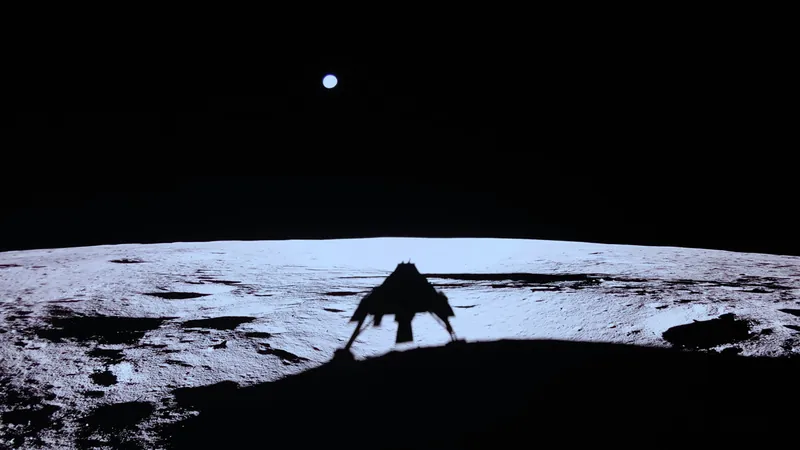
NASA's Breakthrough: New Electric Dust Shield Passes Historic Lunar Test!
2025-04-03
Author: Jia
In a groundbreaking achievement, NASA's latest innovation aimed at combatting the notorious lunar dust has successfully demonstrated its capabilities on the moon’s surface. This remarkable advancement marks a pivotal moment for the agency’s ambitious lunar exploration goals.
The Electrodynamic Dust Shield (EDS) was onboard Firefly Aerospace's Blue Ghost, the first privately funded lunar lander to successfully land on the moon. Following its historic touchdown on March 2, the EDS completed its critical test by effectively removing lunar dust, known as regolith, from various surfaces using cutting-edge electrodynamic forces. The successful demonstration wrapped up on March 16, confirming the technology's potential.
Lunar dust is not just a nuisance; it poses serious threats to equipment, human health, and habitation efforts. Abrasive and fine, this dust can damage sensitive hardware, infiltrate spacesuits, and even affect astronauts' lungs. NASA’s Artemis program aims to establish one or more lunar bases over the next decade, making the success of the EDS all the more significant.
"This milestone represents a major advancement in our efforts to sustain long-term lunar and interplanetary operations by mitigating dust-related hazards," NASA stated. The applications of this technology are extensive, ranging from protecting solar panels and thermal radiators to preserving the integrity of camera lenses, spacesuits, boots, and helmet visors.
The EDS technology has its roots in an idea proposed back in 1967, originally known as the Electrostatic Curtain, conceived by F.B. Tatum and his NASA colleagues. Developed at Kennedy Space Center in Florida with support from NASA’s Game Changing Development Program, the EDS employs a series of electrodes and electric fields to repel and eliminate dust particles.
Before its lunar application, the EDS was rigorously tested in vacuum chambers using lunar dust samples collected during the Apollo missions. Its initial space test came in 2019 aboard the International Space Station during the Materials International Space Station Experiment (MISSE)-11 mission.
NASA officials emphasized that the developments surrounding the EDS are paving the way for future dust mitigation strategies, playing a vital role in the Artemis program and future missions to both the moon and beyond. As humanity stands on the brink of a new era in space exploration, technologies like the EDS are crucial for overcoming the challenges of living and working on the lunar surface.
Stay tuned as we continue to bring you the latest updates from NASA and the fascinating world of space exploration!

 Brasil (PT)
Brasil (PT)
 Canada (EN)
Canada (EN)
 Chile (ES)
Chile (ES)
 Česko (CS)
Česko (CS)
 대한민국 (KO)
대한민국 (KO)
 España (ES)
España (ES)
 France (FR)
France (FR)
 Hong Kong (EN)
Hong Kong (EN)
 Italia (IT)
Italia (IT)
 日本 (JA)
日本 (JA)
 Magyarország (HU)
Magyarország (HU)
 Norge (NO)
Norge (NO)
 Polska (PL)
Polska (PL)
 Schweiz (DE)
Schweiz (DE)
 Singapore (EN)
Singapore (EN)
 Sverige (SV)
Sverige (SV)
 Suomi (FI)
Suomi (FI)
 Türkiye (TR)
Türkiye (TR)
 الإمارات العربية المتحدة (AR)
الإمارات العربية المتحدة (AR)